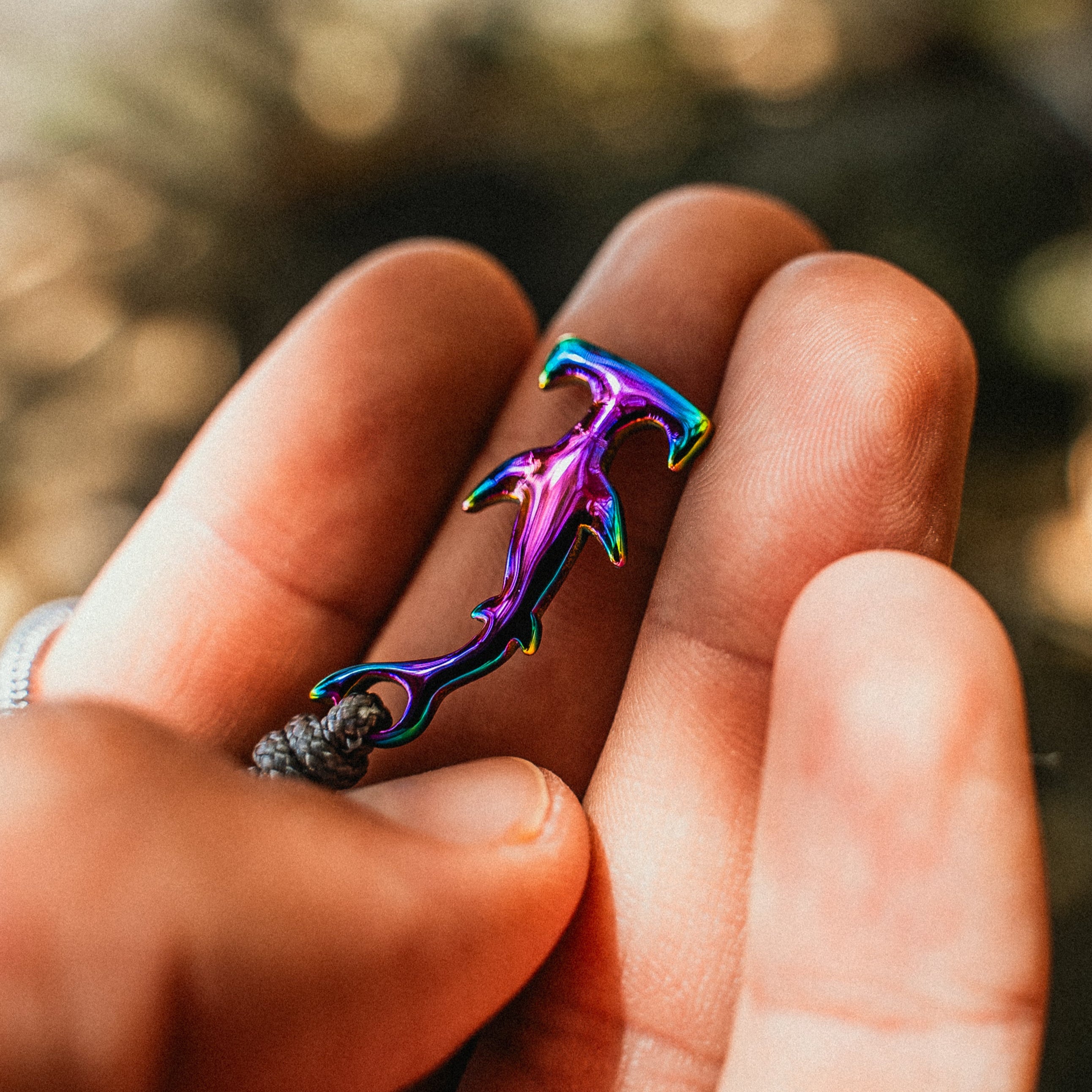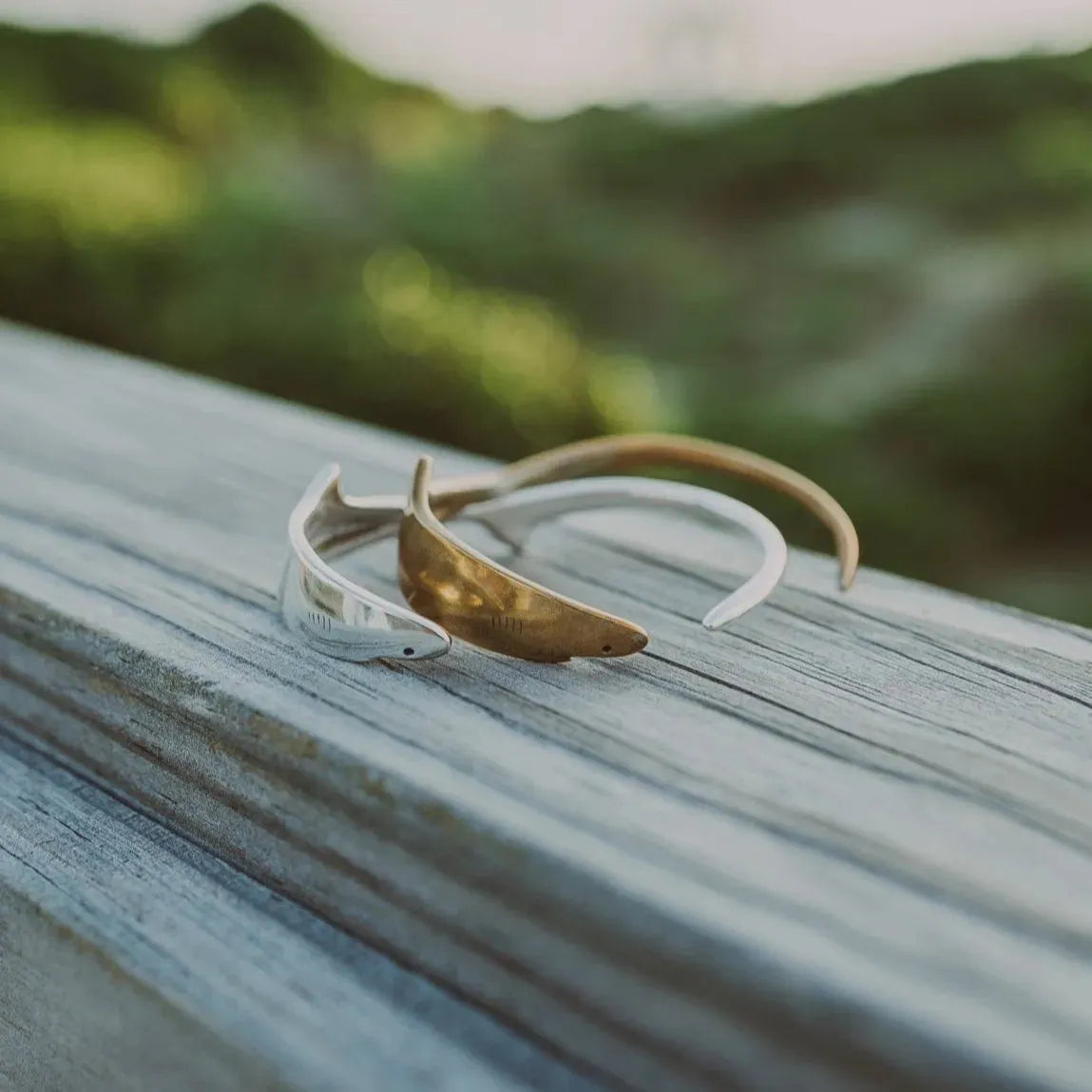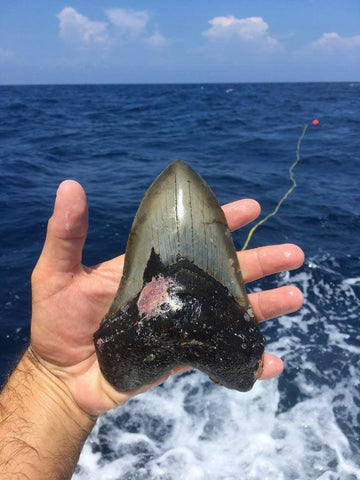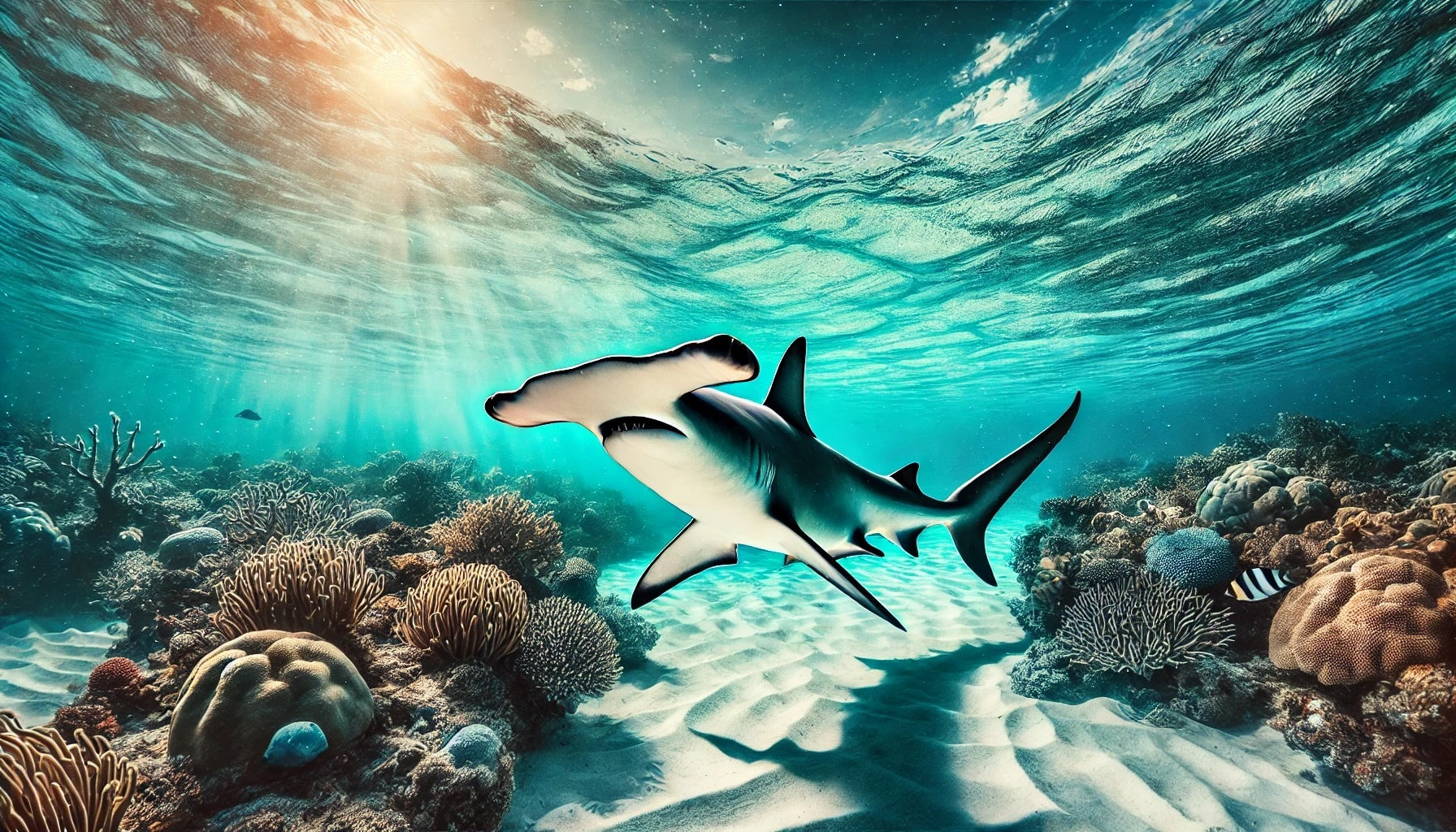
Does Size Matter? Let's Talk Sharks
When we think of sharks, our minds tend to go to Great Whites and huge, pointy teeth and maybe even that one shark that rhymes with “leg” (but we’ll get to that later). And thanks to a little movie that came out in 1975 warning about a white shark off the New York coast, white sharks are oftentimes seen the most prominent (and largest) shark in the sea.
In fact, with over 500 different species of sharks occupying every corner of the ocean, they’re bound to come in all sorts of shapes and sizes. What would you say if we told you that the smallest shark can fit into the palm of your hand, while the biggest is as big as a school bus?
Let’s dive in and take a look at some of the smallest, biggest, and inbetweeners, because they’re all important!
1. Dwarf Lantern Shark
 (Chip Clark/Smithsonian Institution)
(Chip Clark/Smithsonian Institution)
Like many other deep-sea shark species, we know very little about the tiniest shark on our list. In fact, it’s only been observed in the ocean a few times! The dwarf lantern shark grows to about 8 inches in size, feeds on krill, and gets their name from their bioluminescence. Just like the cookie-cutter shark and other residents of the deep, they have light-emitting organs along their belly that serve as protection as they feed in shallow waters, helping to blend them in with the moon above.
2. Cookie-cutter Shark
 (Courtesy: The Smithsonian)
(Courtesy: The Smithsonian)
This is one of the most interesting species of sharks (and one of the smallest)! These sharks - who show no evidence of sex segregation - grow, on average, to be between 18 and 20 inches in length. They live in deep water during daylight hours and are believed to migrate vertically to surface waters at night to feed.
Speaking of feeding: the cookie cutter is a parasitic shark, meaning that they feed by latching on to much bigger fish like tuna, dolphins, and even other larger sharks! They cut out a perfectly round chunk of their flesh, and you guessed it, the mark they leave with their teeth is in the shape of a cookie-cutter! Their body is covered with light-emitting organs - similar to many of the other creatures of the dark - which are most likely used for communication or camouflage!
3. Epaulette Shark
At a size of about 42 inches (maximum), these sharks feed at low tide in pools exposed among the rocks in warm, shallow waters. Unfortunately, this tends to get them trapped out of the water without a swimming path back to the ocean in site. Luckily though, this is where the Epaulette shark being known as the “walking shark” comes in handy! They can walk (okay, more like waddle) on back out to the water! When they do get stranded, they’ve been known to survive up to an hour without oxygen (as they can only breathe through their gills inside water)!
4. Frilled Shark

This smaller cousin of the goblin shark was named for its characteristic frilly gills. They have a long body, reaching a maximum length of 6 feet, and are thought to strike their prey like a snake. They are sometimes called living fossils (just like their gobliny cousins) the frilled shark has the longest recorded gestation period of any animal at 3.5 years, giving birth to 2-15 live baby shark. (We hope the moms get their deserved maternity leave!)
5. Goblin Shark
Another living fossil, the goblin shark’s family tree dates back 125 million years. With their eccentric face, teeth, and pink color, they definitely are a unique shark species. (But hey, beauty is in the eye of the beholder!)
6. Megamouth Shark
Another impressive-looking filter feeder, megamouths can grow to about 17 feet in length. They spend most of their time in the depths (as far as 15,000 feet down) with their mouths constantly wide open in order to filter out their preferred planktonic prey.
Only about 100 specimens of this mysterious shark are known to have been observed, so we still know very little about them. Scientists only discovered this species in 1976, which means we still have so much more to learn!
7. Great Hammerhead Shark
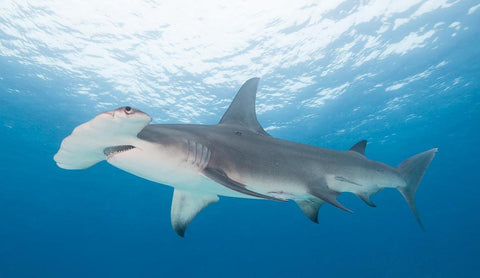
Next up, the shark that is unmistakable (and the easiest to draw in a game of Pictionary): the great hammerhead! It's thought that the shape of their heads evolved to finetune their hunting skills to locate stingrays that hide under the sand as their wide-set eyes give them a better visual range than most other sharks! Their sensitive heads can detect the electrical impulses given off from the rays, which means the rays’ usual impressive camouflage is much less effective on the predator in pursuit! There are nine hammerhead species, but the great hammerhead is the biggest one, reaching a whopping 20 feet.
8. Great White Shark

Hollywood’s favorite shark can grow to a maximum of 21 feet in length. And while they sit at the top of the marine food chain, they’re not the tippy-top, as orca whales have been known to occasionally take them out! White sharks live in practically every ocean, but tend to stay away from the coldest waters around the poles.
They also have a unique hunting technique in which they swim to the surface at great speed to grab unsuspecting prey from below, lifting their entire body out of the water. This incredible hunting skill called “breaching” and Discovery’s Shark Week always has a few specials showcasing it! If a white shark catches a good size seal, they can last another month or two without a big meal (now THAT’S a white shark’s Happy Meal)!
9. Greenland Shark
Growing to a size of about 24 feet long, the Greenland sharks are the granddaddies (and grandmommies) of them all, as they are estimated to live to be between 200 to 400 years old. This is the longest lifespan of all vertebrates and scientists don’t think they reach sexual maturity until 100 and 160 years of age!
Greenland Sharks live in the coldest waters and they’re the only known shark species that can thrive in arctic conditions all year long. They also happen to be scavengers that will eat anything they can lay their jaws on. Most Greenland sharks are blind from parasites that attach themselves to their eyeballs (but they don’t mind this much as they can rely on their other senses to help them get by)!
10. Basking Shark

The second biggest shark in the ocean is another filter feeder, but these guys and gals live in colder waters than their filter feeding brethren. They can grow up to 45 feet long, and can often be spotted on the water's surface (hence the name, as basking means “to lie exposed to warmth and light”). But don’t for one second think that they’re lazy sharks. In fact, not at all! They’re just slowly swimming along, taking their time, with their enormous mouths wide open to filter the plankton that they need to keep their big bodies energized.
11. Whale Shark

The largest fish in the ocean has been known to measure up to 60 feet! The whale shark is the last filter feeder on our list that sucks in large amounts of water to filter out all the plankton. They travel considerable distances to find enough food to feed their massive bodies (they need even more food than basking sharks do)! Bonus fun fact: they’re able to suction in large amounts of water and feed as they remain stationary!
Although whale sharks often travel alone, they are known to congregate in the hundreds during coral spawning events or upwellings, where there’s plenty of tasty food and nutrients for them to feed on. They live in warm waters and we can identify them by the dotted pattern on their body, as each shark has its own pattern, much like our fingerprints!
We hope you’ve enjoyed this deep dive! But you know we couldn’t leave without giving an honorable mention to the (now extinct) Megalodon!
Bonus shark: the Meg
The name of this legendary shark means "giant tooth", which is fitting, since their fossilized teeth are the only evidence scientists have for their existence (since sharks don’t leave any bones behind)! Take a look at the photo above from WTVD-TV of a Meg tooth found off of the North Carolina coast! This massive shark species was estimated to be up to 65 feet in length and scientists believe that they went extinct 3.6 million years ago when the planet entered a cooling period that was estimated to kill off one-third of all marine mammals, which left the Megalodon struggling to find food.
So regardless of what the Hollywood film "The Meg" tells us, whale sharks are still the biggest shark species alive in our oceans today!




